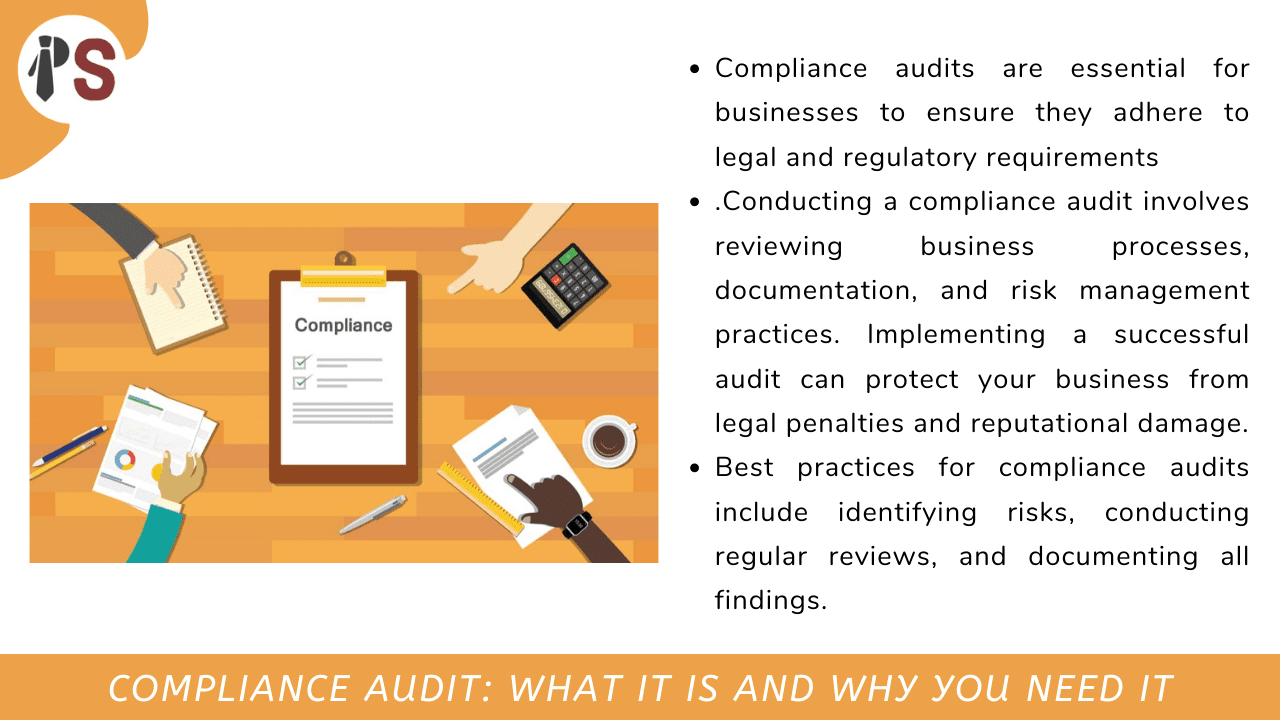
Compliance audit is a process that involves assessing a company's compliance with legal, regulatory, and industry standards. The audit aims to ensure that the organization is following all the applicable laws and regulations and is conducting its operations in an ethical and responsible manner. This type of audit is important for companies to identify and mitigate potential legal and regulatory risks that may negatively impact the organization's reputation, financial health, and overall success.
In this blog, we will discuss in detail what a compliance audit is and why it is necessary for businesses to conduct it.
A compliance audit is a process of evaluating whether an organization is following relevant legal, regulatory, and industry requirements, standards, and best practices. The objective of a compliance audit is to ensure that the organization is operating in a way that meets legal and regulatory obligations and industry standards. Compliance audits are typically conducted by third-party auditors or internal auditors who are knowledgeable about the relevant laws, regulations, and standards.
Conducting a compliance audit is important for several reasons, including:
Ensuring Legal Compliance: Compliance audits help organizations ensure that they are meeting all the legal requirements and regulations. Failure to comply with legal requirements may result in penalties, lawsuits, and loss of reputation.
Mitigating Risks: Compliance audits help organizations identify potential legal, financial, and reputational risks and take appropriate measures to mitigate them.
Improving Efficiency: Compliance audits help organizations identify and eliminate inefficiencies in their processes and operations, leading to cost savings and improved performance.
Enhancing Reputation: A successful compliance audit helps organizations build a reputation for being responsible, trustworthy, and ethical.
Meeting Stakeholder Expectations: Compliance audits help organizations meet the expectations of their stakeholders, including customers, investors, employees, and regulators.
Here are some best practices for conducting a compliance audit:
Establish Audit Objectives: Define the scope, objectives, and timeline of the audit and identify the key regulations, laws, and standards that the audit will assess.
Gather Information: Collect all relevant documents, policies, and procedures related to the regulations, laws, and standards being audited.
Evaluate Controls: Evaluate the effectiveness of the organization's internal controls and compliance programs, including policies, procedures, and monitoring mechanisms.
Identify Gaps: Identify gaps between the organization's practices and the regulations, laws, and standards being audited.
Develop Recommendations: Develop recommendations to address the identified gaps and improve the organization's compliance program.
Monitor Progress: Monitor the implementation of the recommendations and track progress to ensure that the organization is meeting its compliance obligations.
A compliance audit is an essential tool for businesses to ensure that they are meeting legal, regulatory, and industry requirements. Conducting a compliance audit can help businesses mitigate risks, improve efficiency, enhance reputation, and meet stakeholder expectations. By following best practices for conducting a compliance audit, businesses can ensure that they are identifying and addressing compliance gaps and establishing a robust compliance program.
At Professional Saathi, we offer a range of business consultancy services that help businesses improve their performance, achieve growth, and overcome challenges.
Copyright 2026 © Created By KTPG PROFESSIONAL SAATHI CORPORATE CONSULTANT PRIVATE LIMITED, All Rights Reserved.
Leave Your Comment